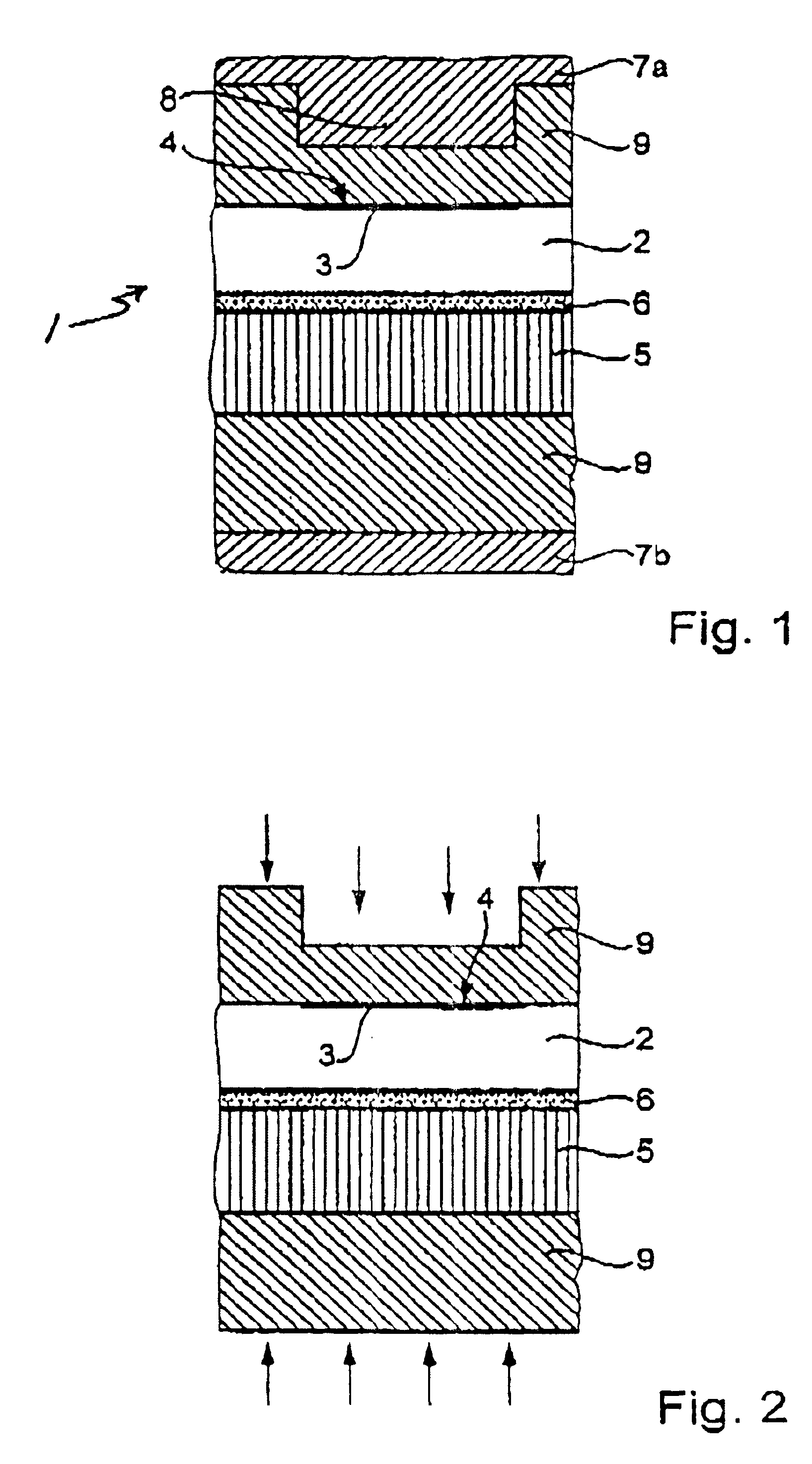Method and production of a sensor
a sensor and production method technology, applied in the field of semiconductor sensors, can solve the problems of unsuitable automation methods, unsuitable known methods, and inability to produce blocks and components which are complementary to the surface structure of the sensor surface when the block is in its operating position
- Summary
- Abstract
- Description
- Claims
- Application Information
AI Technical Summary
Benefits of technology
Problems solved by technology
Method used
Image
Examples
Embodiment Construction
[0020]FIG. 1 shows a partial cross section through an injection molding tool, in which a semiconductor sensor chip 1 that includes an active sensor surface is situated on a frame and is encapsulated. The sensor 1 includes a carrier chip 2, which is designed as a semiconductor chip, and which has a sensor structure 3 with an active sensor surface 4. The carrier chip 2 is disposed on a frame 5, together with other carrier chips. The carrier chip 2 adheres to the frame 5 through an adhesive layer 6, which is located between the carrier chip 2 and the frame 5. The carrier chip 2, situated on the frame 5, is placed into the inner cavity of an injection molding tool, which has two molding parts 7a, 7b, that can move relative to one another and that can be brought into an open and closed position.
[0021]The injection molding tool has openings (not shown in the drawing) which are situated in the separation plane of the mold parts 7a, 7b. When the mold parts 7a, 7b are in the closed position,...
PUM
 Login to View More
Login to View More Abstract
Description
Claims
Application Information
 Login to View More
Login to View More - R&D
- Intellectual Property
- Life Sciences
- Materials
- Tech Scout
- Unparalleled Data Quality
- Higher Quality Content
- 60% Fewer Hallucinations
Browse by: Latest US Patents, China's latest patents, Technical Efficacy Thesaurus, Application Domain, Technology Topic, Popular Technical Reports.
© 2025 PatSnap. All rights reserved.Legal|Privacy policy|Modern Slavery Act Transparency Statement|Sitemap|About US| Contact US: help@patsnap.com



